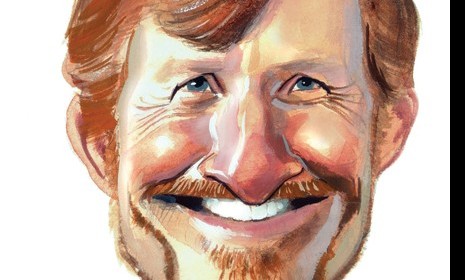Issue of the week: Parsing a mixed employment report
Whether one sees the glass as half-empty or half-full, it’s clear that the labor market still has a long way to go before anyone can argue that the glass is anywhere near full.
To get a sense of how badly the economy has performed over the past year, consider that most experts viewed May’s job-loss number—345,000—as good news, said Michael Bowman in VOAnews.com. At almost any other time in U.S. history, monthly job losses on that scale would be seen as disastrous. But after a string of losses of 600,000 or more jobs per month, May’s results looks positively upbeat. The same report, though, indicated that the nation’s unemployment rate had soared to a 26-year high of 9.4 percent, from 8.9 percent in April. Whether one sees the glass as half-empty or half-full, it’s clear that the labor market still has a long way to go before anyone can argue that the glass is anywhere near full.
That supposedly promising unemployment number “is actually a rosy spin on what is really happening,” said Carla Fried in CNNmoney.com. The number highlighted in the headlines represents only one of the government’s many attempts to capture the current jobs picture. Another government measure, known as U-6, takes a wider view, including “people who aren’t working full time but wish they were,” as well as people who aren’t working or looking for work, but would like a job and have looked for work recently. When those “underutilized workers” are factored in, it emerges that “one out of every six members of the civilian labor force is either out of work or not fully employed.” Statistics like that “make it hard to buy into” the bullish view that the economy is stirring back to life.
Indeed, rather than indicating a nascent recovery, “the May jobs report suggests merely the end of panic unleashed last fall,” said Peter Goodman and Jack Healy in The New York Times. Americans, including those with jobs, still face strong headwinds as they struggle to regain lost economic ground. With real estate values down across the country, few homeowners will be able to generate extra cash by refinancing. And banks remain stingy with credit. That leaves wage growth as the only source of new income for most consumers. But “wage growth has been stagnating even as gasoline and medical costs rise, putting pressure on household finances.”
The Week
Escape your echo chamber. Get the facts behind the news, plus analysis from multiple perspectives.

Sign up for The Week's Free Newsletters
From our morning news briefing to a weekly Good News Newsletter, get the best of The Week delivered directly to your inbox.
From our morning news briefing to a weekly Good News Newsletter, get the best of The Week delivered directly to your inbox.
What’s especially worrying is that joblessness continues to rise even though some 3 million U.S. jobs are going unfilled, said Peter Coy in BusinessWeek. The massive number of job openings is “evidence of an emerging structural shift in the economy that has created serious mismatches between workers and employers.” People who lost jobs in shrinking sectors such as construction, finance, and real estate can’t easily adapt their skills to join growing sectors such as accounting, health care, and government. Worker retraining programs—part of the Obama administration’s recently announced plan to add or retain 600,000 jobs—“have shown some success.” But to snag one of those unfilled jobs, “displaced workers may have to move down a few rungs as they switch careers.” For working Americans, recovery will be a long, hard slog.
A free daily email with the biggest news stories of the day – and the best features from TheWeek.com
-
 Political cartoons for January 4
Political cartoons for January 4Cartoons Sunday's political cartoons include a resolution to learn a new language, and new names in Hades and on battleships
-
 The ultimate films of 2025 by genre
The ultimate films of 2025 by genreThe Week Recommends From comedies to thrillers, documentaries to animations, 2025 featured some unforgettable film moments
-
 Political cartoons for January 3
Political cartoons for January 3Cartoons Saturday's political cartoons include citizen journalists, self-reflective AI, and Donald Trump's transparency
-
Issue of the week: Who killed the Twinkie?
feature The seemingly imperishable Twinkie has finally met its match, and its name is Big Labor.
-
Issue of the week: Apple’s patent victory over Samsung
feature Apple's “sweeping victory” is among the biggest intellectual-property triumphs on record.
-
Issue of the week: Goldman Sachs’s ‘toxic’ culture
feature Greg Smith’s stinging public resignation from Goldman Sachs landed on Wall Street “like a bomb.”
-
Issue of the week: Can a mortgage deal revive housing?
feature Five big banks reached a settlement with state and federal officials to pay $26 billion to offset some of the damage caused by their misdeeds in the foreclosure crisis.
-
Issue of the week: Europe gets downgraded
feature Standard & Poor's lowered the credit rating for nine European nations, indicating that Europe has not yet convincingly dealt with the debt crisis.
-
 Tom Toles: Cartoonist of the Year
Tom Toles: Cartoonist of the Yearfeature Meet the winner of The Week's Cartoonist of the Year award
-
 Cartoonist of the Year finalists
Cartoonist of the Year finalistsfeature A brief look at this year's nominees
-
Issue of the week: Calling out the crash’s culprits
feature The Senate's Permanent Subcommittee on Investigations has just published its 635-page report on the financial crisis.